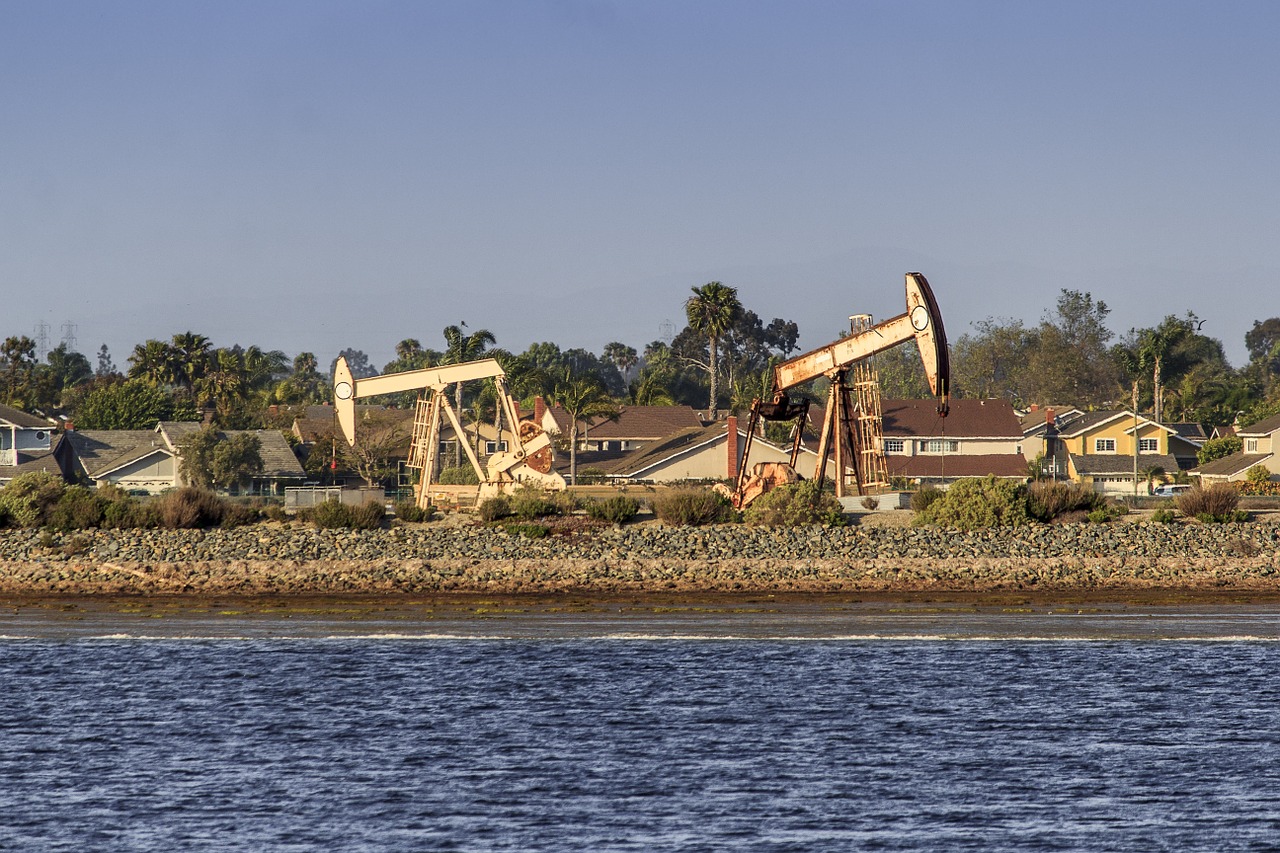
CATHY BUSSEWITZ and SUSAN MONTOYA BRYAN
Mon, December 6, 2021
ALBUQUERQUE, N.M. (AP) — Exxon Mobil says it has a plan for cutting greenhouse gas emissions from its operations in one of the most prolific oilfields in the United States, saying it hopes to achieve its net-zero goal for operations in the Permian Basin by 2030.
The company made the announcement Monday, saying the effort will target both its own operations as well as indirect emissions associated with the electricity it buys to power well sites and other infrastructure in the basin, which spans parts of southeastern New Mexico and West Texas.
Although limited, Exxon’s announcement is significant because it’s the first tangible commitment the company has made to reducing greenhouse gas emissions, compared to major European oil and gas companies which set more tangible targets, said Artem Abramov, head of shale research at Rystad Energy.
“In the past, they were somewhat criticized for the lack of any sort of tangible commitment,” Abramov said.
The reach of Exxon’s commitment is narrow in several ways. For one, the goal is limited to its operations in a basin that represents about 12-13% of its total oil and gas production this year, Abramov said.
Exxon's commitment does not addresses what are called “Scope 3” emissions, the largest category, which include the emissions produced when customers burn its oil or gas. The only way Exxon could reduce those emissions would be to cut back on how much oil and gas the company produces.
However, rather than reducing, Exxon’s production in the Permian Basin has been growing.
Exxon's announcement dovetails with what is required of oil and gas companies operating in New Mexico under rules adopted by state regulators earlier this year. That includes better detection of methane emissions, upgrading equipment and eliminating routine flaring, which is the practice of burning off unwanted natural gas into atmosphere.

Touted by state officials as some of the strongest gas capture requirements in the nation, New Mexico’s rules set a target of capturing 98% of all natural gas waste by the end of 2026.
The U.S. Environmental Protection Agency also is poised to tighten federal methane regulations for the industry, and the New Mexico Environment Department is crafting its own rules aimed at oilfield equipment that emits methane, volatile organic compounds and nitrogen oxides.
The U.S. House Science Committee also has notified chief executives of Exxon and nine major oil companies that they must disclose more data about their methane emissions in the Permian Basin.
Rep. Eddie Bernice Johnson, a Texas Democrat who chairs the panel, said the companies’ current approach to monitoring methane emissions in the basin is inadequate. She said U.S. companies must do more to meet a recent pledge by the U.S. and more than 100 other countries to cut methane emissions by 30% by the end of the decade.
Besides Exxon, companies receiving the letter included Occidental Petroleum, ConocoPhillips, Chevron, Devon Energy and Pioneer Natural Resources.
Johnson said she was concerned that leak-detection and repair programs conducted by the oil industry may not identify intermittent leaks that contribute to climate pollution.
The committee set a Jan. 21 deadline for companies to provide data on methane leaks and detection efforts.
House Democrats have approved a plan to impose a fee on methane leaks from oil and gas wells, but the plan faces strong opposition from the industry and criticism by centrist Democrats as it moves to the Senate.
Exxon has made progress with reducing flaring in the Permian Basin. In 2018, Exxon was flaring 11.3% of its gas in the basin. The company brought that down 0.28% in the third quarter of 2021.
Earlier this month, Exxon said it would boost its spending on greenhouse gas emission-reduction projects to $15 billion over the next six years. The energy giant has been under pressure to reduce climate-harming emissions and investors forced turnover on the company’s board in June.
Major European oil and gas companies such as Shell and BP have been diversifying to invest more in solar and wind energy, but “when it comes to Exxon Mobil, they are not necessarily that proactive when it comes to renewable energy,” Abramov said. “They are investing in solar and wind to generate power for their oil and gas extraction. It’s not something they see as a future contributor to their revenue stream.”
___
Bussewitz reported from New York. AP writer Matthew Daly in Washington contributed to this report.

An Overview of How Oil & Natural Gas Was Formed in the Permian Basin
The Permian Basin is one of the most prolific oil producing regions in the U.S. Located in West Texas and East New Mexico; this area spans 86,000 square miles across 52 counties. It has produced over 29 billion barrels of oil and 75 trillion cubic feet of natural gas over the past 90 years. The geology that created this important resource has some fascinating history.
The Permian Basin is one of the most prolific oil producing regions in the U.S. Located in West Texas and East New Mexico; this area spans 86,000 square miles across 52 counties. It has produced over 29 billion barrels of oil and 75 trillion cubic feet of natural gas over the past 90 years. The geology that created this important resource has some fascinating history.
Regional Differences
The geology of the Permian basin is not uniform but consists of three distinct regions. A Central Basin platform separates the Midland basin and Delaware basin. All three of these regions display differing strata characteristics. The means that oil and gas production are localized in areas across these three sub-basins.
The geology of the Permian basin is not uniform but consists of three distinct regions. A Central Basin platform separates the Midland basin and Delaware basin. All three of these regions display differing strata characteristics. The means that oil and gas production are localized in areas across these three sub-basins.
Early History of the Basin
The story of the Permian Basin begins about 300 million years ago. The area was once situated along the western margin of Pangaea and located about 10° north of the equator. Being located along the margin, the area experienced moderate subsidence and carbonate sediment formation. During the Pennsylvanian Ouachita-Marathon Orogeny, a major continental collision event resulted in mountain and basin formation. Throughout the Pennsylvanian and Permian periods, the basin underwent a series of deposition of eroded and broken rock, carbonate from dead sea life, and evaporates consisting of organic matter from shallow evaporation fields. This resulted in the accumulation of stratified material.
The Role of Sea Levels
The greatest influence on the stratigraphy of the Permian Basin was the change in sea level throughout deposition. Most of the area was located on a shelf margin. During periods of high sea level, reefs and shoals developed along the margins resulting in carbonate deposits from sea life. During periods of lower sea levels, deposits were dominated by river deposits. These accumulated along the margins of the shelf and later transported by water into the basin. These eventually formed thick siltstone and sandstone turbidite deposits.
The greatest influence on the stratigraphy of the Permian Basin was the change in sea level throughout deposition. Most of the area was located on a shelf margin. During periods of high sea level, reefs and shoals developed along the margins resulting in carbonate deposits from sea life. During periods of lower sea levels, deposits were dominated by river deposits. These accumulated along the margins of the shelf and later transported by water into the basin. These eventually formed thick siltstone and sandstone turbidite deposits.
Recent Geology
Throughout the Mesozoic period, the region became more stable. An uplift to the west occurred during the late Tertiary causing basin and range formation. This produced an eastward dip in the pre-tertiary strata. This caused considerable erosion due to groundwater circulation and replacement of Permian evaporates.
The history of the Delaware and Midland basins different significantly. The Midland basin was the recipient of large amounts of sediments from eroded and broken rock during the Carboniferous period. This eventually formed an underwater delta system in the Midland Basin. The Delaware basin received small amounts of sediment from the low coastal plains. The Midland Basin filled long before the Delaware Basin. The Central Basin remained elevated and favored reef formation.
Texas can thank cycles of high and low sea levels that caused the marine shoreline to invade and then recede multiple times for their oil and natural gas reserves. The unique location of the land along an ancient coast caused the formation of the Permian Basin and its abundant oil resources.



No comments:
Post a Comment